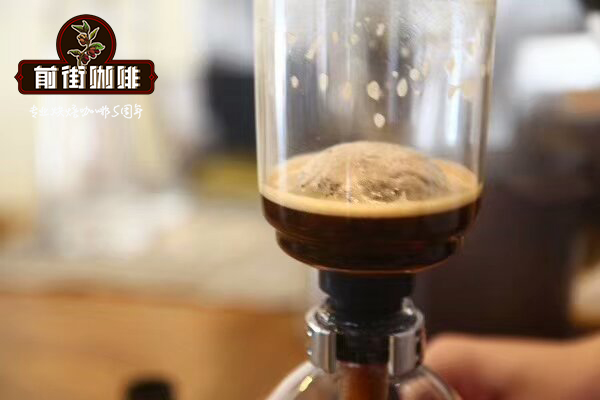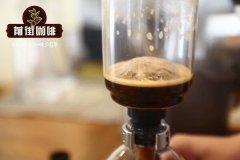Caffeine content of Blue Mountain Coffee does hand-made Blue Mountain Coffee taste bitter?

Professional barista communication, please pay attention to coffee workshop (Weixin Official Accounts cafe_style)
Blue Mountain Coffee: Blue Mountain Coffee, which is divided into four grades below Blue Mountain Coffee and Alpine Coffee. From the top to the bottom of the quality points are: NO.1, NO.2, NO.3 and PB, PB is round beans. According to CIB standards, only coffee grown above 666 meters above sea level is called Jamaica Blue Mountain Coffee. Alpine coffee, coffee produced below 666 meters in the Blue Mountain region of Jamaica is called alpine coffee, which is also second only to Blue Mountain coffee quality coffee. It is called the brother variety of Blue Mountain coffee by industry insiders. Jamaica Blue Mountain caffeine production is very small, so if you want to taste Jamaica coffee, then Jamaica alpine coffee is your best choice. Jamaica coffee, coffee grown outside the Blue Mountains is called Jamaica coffee. It turns out that Chinese coffee industry generally has a wrong understanding that only coffee planted in the Blue Mountain area above 1800 meters above sea level can be called Blue Mountain Coffee. In fact, there is only one manor on the mountain crown above 1800 meters in the Blue Mountain Range, Amber, which is descended from Chinese people. The manor's main surname is Lyn(Lin), whose ancestral home is Guangdong, China. The manor has only 30 hectares of land and its yield is very small. Blue Mountain coffee is mainly distributed in the Blue Mountain Mountains John Crow, St. John's Peak,Mossman's Peak,High Peak,Blue Mountian Peak and other five mountain areas.
Blue Mountain Coffee Flavor: Why Blue Mountain Coffee tastes pure "secret": their coffee trees all grow on rugged hillsides, the picking process is very difficult, non-local skilled women simply can not be competent. It's important to pick coffee beans that are ripe, as immature or overripe can affect the quality of coffee. The beans are shelled the same day and allowed to ferment for 12-18 hours. Coffee beans are then washed and sifted. After that, the process is drying, which must be carried out on concrete floor or thick blanket until the humidity of coffee beans drops to 12%-14%. Then they are stored in special silos. When needed, it is taken out and roasted, and then ground into powder. These procedures must be strictly controlled, otherwise, the quality of coffee will be affected. Blue Mountain coffee is low in caffeine, less than half of other coffees, in line with modern health concepts.
Important Notice :
前街咖啡 FrontStreet Coffee has moved to new addredd:
FrontStreet Coffee Address: 315,Donghua East Road,GuangZhou
Tel:020 38364473
- Prev

Introduction to how to choose and buy Blue Mountain Coffee
Professional baristas please follow the coffee workshop (Wechat official account cafe_style) Blue Mountain Coffee: blue Mountain Coffee, of which Blue Mountain Coffee and Alpine Coffee are each divided into four grades. From top to bottom in terms of quality, NO.1, NO.2, NO.3 and PB,PB are round beans. According to CIB standards, only coffee grown above 666m above sea level is called
- Next

Authentic Blue Mountain flavor description Blue Mountain Coffee description
Professional baristas please follow the coffee workshop (Wechat official account cafe_style) Blue Mountain Coffee: blue Mountain Coffee, of which Blue Mountain Coffee and Alpine Coffee are each divided into four grades. From top to bottom in terms of quality, NO.1, NO.2, NO.3 and PB,PB are round beans. According to CIB standards, only coffee grown above 666m above sea level is called
Related
- Beginners will see the "Coffee pull flower" guide!
- What is the difference between ice blog purified milk and ordinary milk coffee?
- Why is the Philippines the largest producer of crops in Liberia?
- For coffee extraction, should the fine powder be retained?
- How does extracted espresso fill pressed powder? How much strength does it take to press the powder?
- How to make jasmine cold extract coffee? Is the jasmine + latte good?
- Will this little toy really make the coffee taste better? How does Lily Drip affect coffee extraction?
- Will the action of slapping the filter cup also affect coffee extraction?
- What's the difference between powder-to-water ratio and powder-to-liquid ratio?
- What is the Ethiopian local species? What does it have to do with Heirloom native species?

